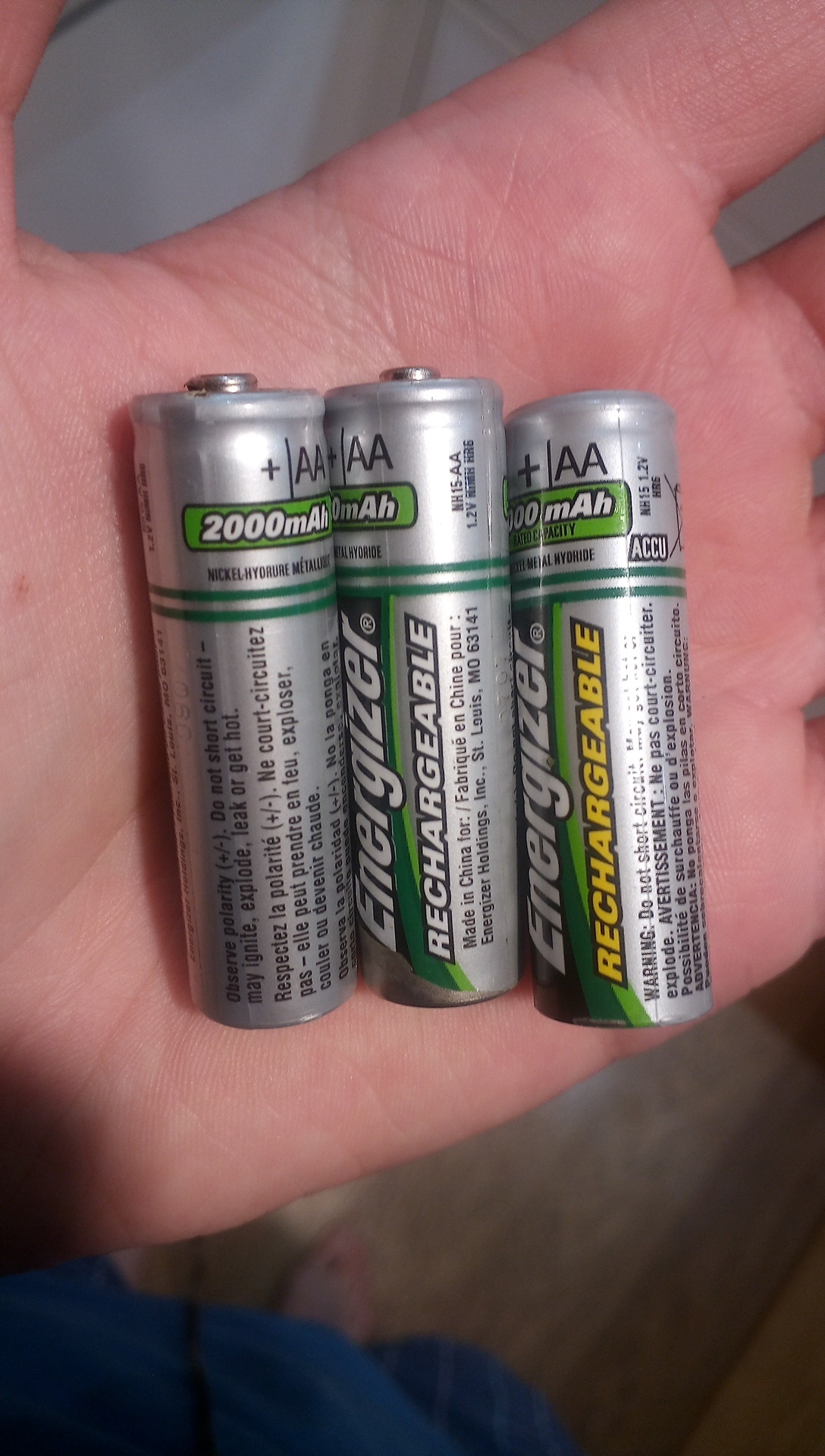Those batteries in your photo are NiMH batteries... which discharge on their own at a fairly rapid rate even if you're not using them at all. They're also pretty big and heavy for the amount of power they provide (which, due to the self-discharge issue, is effectively a lot lower than the official number on the battery).
I strongly recommend investing in devices that use 18650 batteries. They're about the same size/weight as a AA, and they last much longer (both in terms of from full to flat and also the number of years (decades?) of use you'll get from the battery.
A lot of "proprietary" batteries are in fact a bunch of 18650 cells wired together.
It's worth investing in good ones - the quality varies significantly from brand to the next. With a good 18650 cell, you won't be replacing it when the battery expires, you'll be transferring it to a new gadget when the gadget is broken or so old that you decided to buy a new/better model.
